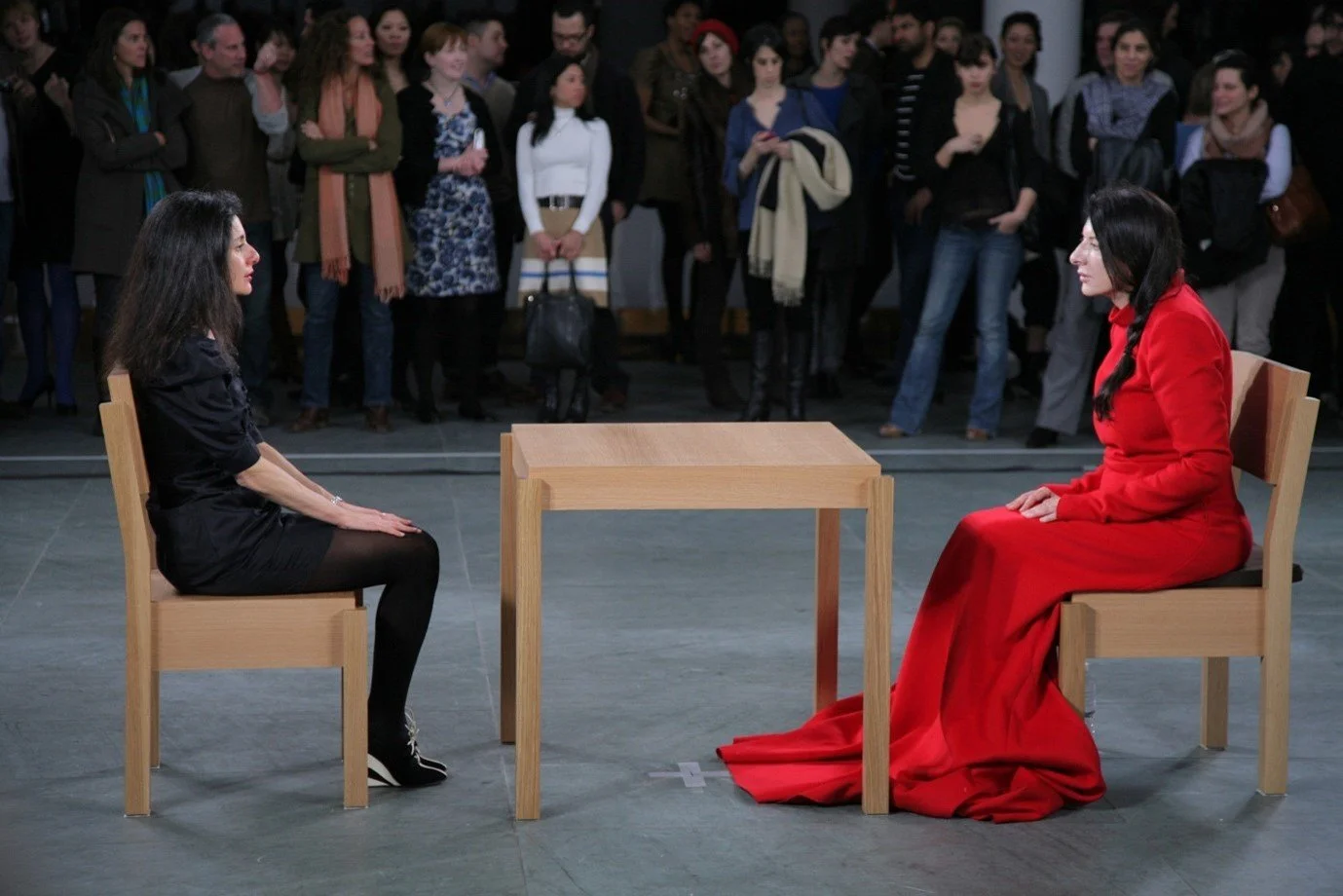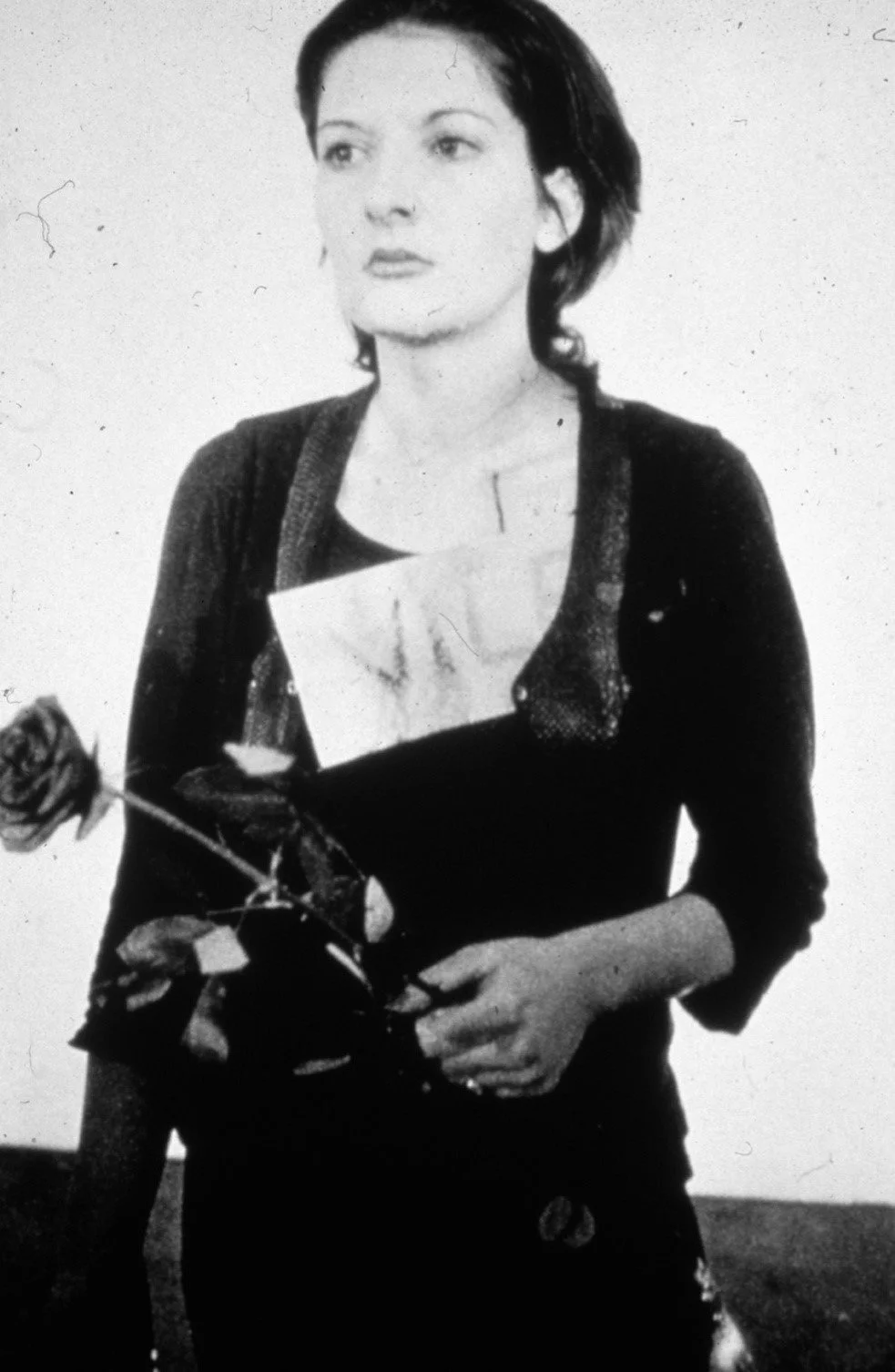Marina Abramović: The Art of Self and Connection – A Retrospective at the Royal Academy of Arts.
BY NINA ZMELONEK MULLIGAN
Marina Abramović, a name synonymous with the fusion of art and self, graces the hallowed halls of London's Royal Academy of Arts (RA). In this retrospective exhibition, her face becomes a ubiquitous presence, a fitting representation of her unique and deeply personal art that is intrinsically tied to her own body and, by extension, her very being.
As a pioneer of performance art, Abramović has developed a unique practice that she now shares with students, training them on her method. Throughout the run of the exhibition, four different performances are re-enacted by these artists at various times, engaging visitors in an immersive experience that underscores the universality of the human condition.
Marina Abramović. The Artist is Present. 2009. Source: MoMA archive
A captivating aspect of the exhibition is the act of gazing. A performance she executed at MoMA in 2010, 'The Artist Is Present,' is prominently displayed in the exhibition's opening room. For three months, Abramović sat in the gallery opposite an empty chair, inviting viewers to engage with her. Projected on one wall are the faces of participants who connected with Abramović, while the opposite wall showcases her face in various interactions. This shared gaze between the artist and those who choose to sit across from her, as well as the spectators, creates a powerful exploration of human connection. The simple act of staring, a gaze exchanged between two individuals, takes on a profound significance when viewed from the side, provoking contemplation on the fundamental human need for connection and understanding.
Marina Abramović. Rhythm 0. 1974. Source: MoMa archive
The second room of the exhibition offers a striking shift in atmosphere. The air turns cold, and the room reverberates with the haunting sounds of screams from different corners. Photographs capture moments from Abramović's 'Rhythm 0' performance that took place in Naples in 1974. She invited guests to a room with a table with different objects laid out on it and stood there with an unyielding expression letting people use anything they wanted on her body. The performance pushed boundaries, as participants went as far as cutting her, with the ordeal concluding when someone put a gun to her head. While the first room was an exploration of human connection, the artist giving the participants only a chair and empty space as a tool to use in relation to her, the second is a stark reminder of the boundaries people can cross when given the tools of pain and harm. Here, art serves as an exploration of the depths of human nature in relation to others especially shedding light on the treatment of women and their bodies. By providing people with these instruments of pain, it delves into the dichotomy of human behaviour, a territory where the boundaries between good and evil can be easily blurred.
One of the most fascinating aspects of the exhibition is the way it compels visitors to participate actively rather than merely observe. By re-enacting some of the performances it challenges the conventional role of the onlooker, urging viewers to immerse themselves in the art instead of taking a passive role that has become the norm in art consumption.
Marina Abramović. Imponderabilia. 2022. Source: David Parry/Royal Academy of Arts, London
Two young performers stand in a doorframe naked, performing ‘Imponderabilia,’ from 1977. A crowd of people gather waiting to muster the courage to pass through while unavoidably brushing against the performers. The intimacy of the couples’ stare contrasts with the urgency of those who wish to walk past. Some opt to bypass, leaving the scene to be merely that, a performance, while others confront themselves with the potentially uncomfortable act. Pushing past one might revert to thinking of this only as an exercise in which Abramović is pulling the viewer into her practice.
One cannot help but ponder Abramović's unique practice and how it has transformed into a kind of school. Does it lose its integrity and originality when practiced by others? She has faced criticism for what some see as "selling" herself, but it is essential to recognize that she has skilfully utilized the media to her advantage. Her image is more than a representation of herself; it signifies power, strength, vulnerability, and the complexity of the human spirit. It's also a personal narrative, interwoven with the story of her partner Ulay with whom she used to perform, offering a touching and intricate portrayal of their relationship. Yet, her art is not solely a product of her biography; although it does give insight into her art influenced by her upbringing in Yugoslavia, her work sheds light on human physical and mental endurance, the constant change and growth that we encounter in life.
In the current presentation at the Royal Academy of Arts, Marina Abramović offers a more digestible and less confrontational approach to her art. It's an opportunity to partake in a second-hand experience, a distilled rendition of the performance art she has pioneered. The exhibition breaks down her art into the act of acting itself. Marina Abramović's work remains a testament to the exploration of self, human connection, and the blurred lines between art and life. And although her newer works seem perhaps a little too populist with the use of crystals and stones as contemplative benches and headrests, her performances continue to inspire.
The exhibition ‘Marina Abramović' is on view at the Royal Academy of Arts, London, until 1 January 2024.
ST.ART does not own the rights to any image used in this article



